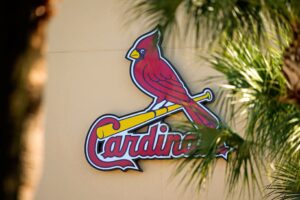The Colorado Rockies have been in a payroll crunch for some time now. So it’s no surprise that payroll is what is about to come to a head in Denver. The indication is that the Rockies, like a great number of teams in MLB, are working to alleviate the pressure on their payroll ceiling.
The Numbers
According to recently released figures, the Rockies 2020 payroll topped out at just over $57 million ranking them 16th in MLB. The club ranked 11th, 14th, 16th and 17th in the four seasons prior. In those four seasons the Rockies payroll rose steadily from $109 million to $151 million. Most interesting were the figures from the two seasons prior to the abbreviated 2020 season. In 2019, the Rockies payroll was just under $152 million and in 2018 it was $147 million. After escalating from the $109 million figure in 2016, those two seasons represent a definitive slowdown. Factor in that a full season of the prorated $57 million 2020 payroll works out to around $145 million for a full season and it seems that the payroll cap for the organization is right around $150 million.
Pressure Points
Rockies Executive Vice President and general manager Jeff Bridich has taken a large amount of the heat offered over the team’s sputtering performance the past two seasons. Prior to that, the Rockies had made it to the postseason two consecutive years in 2017 and 2018. So, as the money increased, the success increased on the field. When the money leveled off, the team regressed.
Fans hold Bridich accountable for the poor showings by free agent signees Bryan Shaw, Wade Davis, Jake McGee, Ian Desmond and Daniel Murphy. Those were the players brought in to bolster the Rockies attack and all have fallen quite short of expectations. Apparently, those signings pushed the Rockies payroll to a point where there was no more wiggle room.
Where The Money Is
The top three money earners on the Rockies are well known. The contracts of Nolan Arenado, Charlie Blackmon and Trevor Story have them scheduled to make a combined $74.5 million in 2021. Arenado and Blackmon have contracts that extend past 2021 although Arenado has an opt-out clause in his contract that can be engaged after the season. Blackmon has two player options following the 2021 season. Story is headed into his last year of team control. It’s in the contracts of at least two of these three players that the payroll room the Rockies need to reform their team is located. But which two and how to move them present complex challenges.
The Chess Game
Arenado’s name has been swirling in the trade talk air like gnats on a muggy summer day. His aforementioned opt-out clause combined with the near-$200 million left on his contract are big obstacles in moving him. The situation is further energized by Arenado’s desire to play on a winner.
Therefore, a team acquiring him must be able to afford his contract and be enough of a contender to convince him not to pull the trigger on his opt-out, AND it would be better to avoid having him play for an extended period on a rebuilding team. Doing so would prolong an already tense situation and erode Arenado’s value to trade partners. The closer that opt-out deadline becomes, the more likely he is to use it.
The Rockies Payroll Plot Thickens
More big money on the Rockies payroll is the fan favorite Blackmon’s contract. He’s on the roster for $21 million next season, then has two more years of player options for another $21 million in 2022 and a yet to be determined amount between $10 million and $18 million in 2023. The salary for the last year of the contract depends on the number of plate appearances Blackmon accrues and his placement in MVP voting over the total span of the contract. The lefty slugger can also block trades to up to fifteen teams each season. Those factors combined with Blackmon heading into his age-34 season complicate his trade availability.
The Rest of the Story
Easily the most tradeable, high-value player the Rockies have is Story. He’s in the last year of team control and is set to make $18.5 million in 2021. A qualifying offer a year from now would likely be in a similar salary range.
The problem is the Rockies would like to keep Story as the cornerstone of a rebuild. He’s 28, he’s in the peak years of his career, and he has the potential to be a highly productive player for a long time. Unlike Arenado, Story keeps a low profile off the field but his attitude between the lines is that he comes to play every day. Amassing 134 home runs and a career .877 OPS over five seasons speaks for itself.
The Rocky Road Ahead
The course for the Colorado Rockies is likely set already given the payroll situation. The team didn’t offer contracts to two players, Tony Wolters and David Dahl that were likely to make between $3-4 million dollars each. The hope is that Dom Nunez, Yonathan Daza or Sam Hilliard can step in and do those jobs at much more affordable rates. That’s after the contracts of Davis, Shaw, McGee and Murphy came off the books.
So it would seem likely that the remaining circumstance warrants more moves. It’s unlikely that the team will make their rotation core of German Marquez, Antonio Senzatela and Kyle Freeland available. Others like Jon Gray and reliever Mychal Givens, both on the verge of free agency, likely will be made available. Veterans Scott Oberg and Daniel Bard may not be far behind.
Sixty Days of Truth
The period from now until spring training starts will determine the team’s course for the next several years. The Colorado Rockies payroll situation is complicated on its own and the near-inert free agent market doesn’t help. After all, a team could trade for Arenado’s complex contract or still sign DJ LeMahieu for less. Trading for Blackmon makes no sense when a younger option like George Springer can be had at a similar price.
Jeff Bridich and his front office team have likely consulted with the Monfort brothers. They’ve determined what the path for the Colorado Rockies and their payroll. They can trade their big contracts to stock their organization with young talent or try to contend with what they have. The problem is that either option cannot be done just a little. The organization will have to be all in no matter which direction is chosen.
Main Photo: Embed from Getty Images






